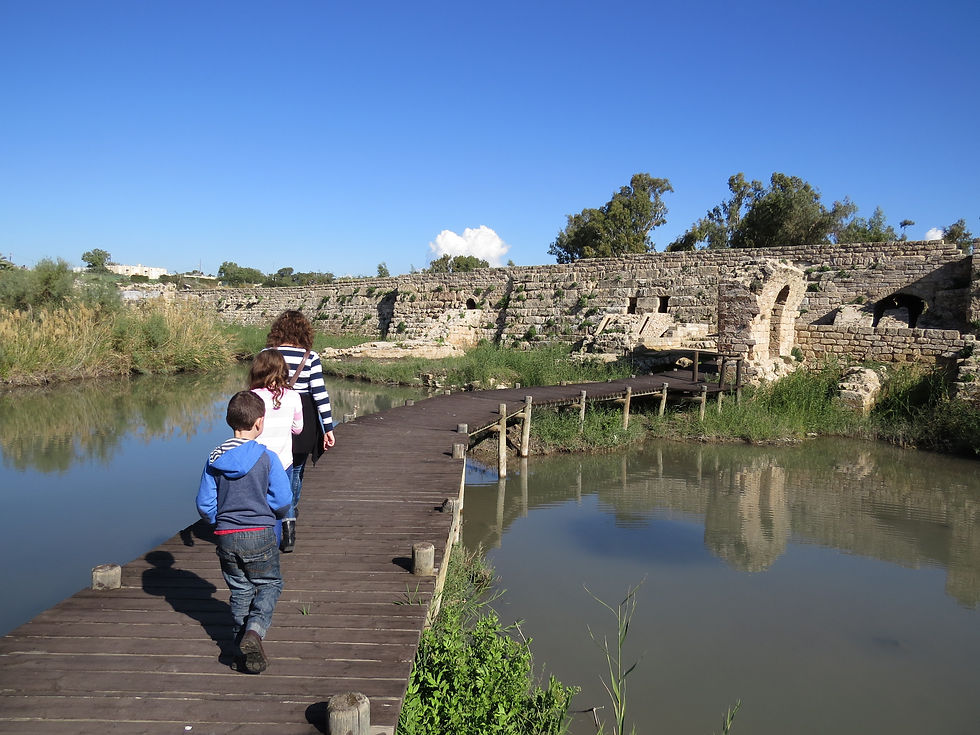



We’ll reach to Taninim stream or Nahal Taninim (in Hebrew) reserve through the road turning from the old Tel-Aviv-Haifa road towards the Arab village Jisr az-Zarqa and Beit Hanania, and from there continue with the car and follow the signs a little further until we arrive to the reserve’s parking lot.
We’ll begin our tour with a short video in the visitors’ center, which will offer an explanation about the uniqueness of the reserve, as a site combining nature and rich history: a tour between the river vegetation, birds and fish alongside the impressive remains of one of the most significant water factories of Caesarea, which is located a few kilometers south of the stream.
With the development of Caesarea during the Byzantine period, a large dam was built on the origin of Nahal Taninim that created a lake to power up flour mills and serve as a source to Caesarea’s aqueduct. The dam and the flour mills along it are the first stop in our tour.
After the Byzantine period, the dam was neglected and behind it the wide Kabara Swamp was created, sprawling from the dam up to the slopes of Mount Carmel. Up until the 20th century, crocodiles occupied the swamp, which is what gave the stream its name. The last crocodile in the stream was hunted down in 1912.
If we look towards west of the dam we’ll notice the spectacular view overlooking Mount Carmel and the small lake that remains from the large Kabara Swamp. The swamp was dried in the early 20’s of the 20th century by the Zionist Movement, with the help of Egyptian and Sudanese workers and Bedouins from the al-Awarana tribe who resided in the swamps. After drying the Malaria-ridden swamps, the Zionist institutions established in 1926 the village Jisr az-Zarqa for the Bedouins, which is located south of the reserve. North of the reserve is Ma’agan Michael; its fish ponds are near the stream and are an attraction for many birds and bird-watchers during bird migration.
We’ll go back a little towards the path going down under the dam and across a wooden bridge and look at the water facilities meant to regulate the water flow in the channels and the water height in the artificial lake and the water-powered water mills.
We’ll continue on a pleasant hike along the stream, between river vegetation typical to our country: Tamarisk, Raspberries, Sticky Fleabane, and Common Reed. As we look upon the water, those with sharp eyes will notice catfish; a large predator fish with mustache-like bristles, soft-shelled turtles, Caspian turtles, and maybe even the swamp cat that can swim and hunt fish. From here we’ll return to the parking lot.
Openning hours:April-September 8 A.M.-5 P.M.
October-March 8 A.M- 4 P.M..
Price: Adult: NIS 22; child: NIS 10
Phone: 972-4-626-5151
Location:The entrance to the reserve is from the old Haifa-Tel Aviv road (no. 4) crossing the bridge over the coastal highway westward toward Bet Hananya.
Haifa - Nahal Taninim national park
Israel top destinations

